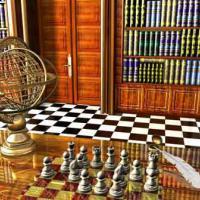
An Optimal Self-Preparation Program for 1400 – 1600 USCF Rated Players
Thousands of chess players dream of learning all the subtleties of the game of chess. There are different ways to do so, but all of them are related to one and the same question: How do we study correctly on our own, so that we don’t waste our time and money in vain?
The present training program gives the answer to this important question. It discusses the best general methods one can apply, while training on their own, if their rating falls between 1400 and 1600 USCF. This model self-study program is based on many classical models for studying chess, given by legendary chess trainers and players, including Yusupov and Dvoretsky.
A self-preparation program should be both simple and effective and so is the one described in this article. It is written to be maximally accessible to the general public and specifically emphasizes on the practical part of the training. It leads the reader through a series of typical exercise types and methods of getting the most of the training, which helps the player to quickly and easily grasp the new knowledge and develop their new skills, so that permanent habits in play are created.
Here we start with the first and most important principle for this level of players. The vast majority of professional chess trainers would agree that most Class ‘C’ players have problems with precision and attentiveness. They all know about the traps they repeatedly fall into, but never do anything different to avoid them. Whatever the cause, they often lose a whole game due to a “small” blunder that costs them a whole BIG point on the next round’s standings! Yet, how do we counter that? Certainly, there are many ways to improve our precision in chess and one of them is using the method of selecting “candidate moves” and calculating the variations after each of them before we make our next move. This method is especially valid for the middlegame and endgame.
One of the most treacherous phases of the game for ‘C’ players is the middlegame, where carelessness and lack of precision in calculating moves and building up a decent plan are punished most severely by the circumstances the wooden army is put in. The first step a 1400-rated player should take to improve their chess is to learn the theoretical and practical values of different pieces. Many players know how to play a decent game of chess, but when it comes to making decisions on which piece is best to get rid of and which to leave on the board, they find themselves utterly confused and helpless! One and the same piece is worth much more in one position and much less in another, so the skill to make a decision on how to deal with such important, yet common, issues in a normal game is crucial for one’s success. This ability can be exercised in various ways and the most effective one is by solving positional chess problems, where the objective is to lead the game to a better position for either black or white.
Another important consideration for a 1400-1600 player’s preparation plan is how to exercise their calculating ability. Many players solve mate-in-two and mate-in-three problems, while others try different types, yet the best way to get the most of doing chess exercises during a training session is to do them systematically and consistently. One should first start solving mate-in-two problems. When they feel that these exercises become easier and easier to deal with, they can move on to the mate-in-three and mate-in-four exercises gradually, as they start adding new types of exercises to their training, such as positional chess problems and practical endgame etudes. That way, a 1400-1600 player with initially shallow calculating depth will start analyze more carefully and precisely his/her positions from two to six moves ahead without any difficulties!
As you can see, a good preparation program deals with a lot of issues, especially when it comes to ‘C’ players, so a systematic training is an important factor that will determine the effectiveness of any self-study plan one can compose for themselves or have composed by a professional chess coach. On average, a ‘C’ player with roughly seven hours per week available for chess training will be able to advance to the ‘B’ and in some rare cases to the ‘A’ level within 20-25 weeks, if consistent training is applied. Below, the present self-training program provides you with a helpful, but generalized guide on spending the next 150 hours of your chess training on effective and systematic chess preparation. Of course, every player has their own personal traits and preferences, which may require a significant change in this program, so if you are really serious about your chess, I would recommend you to get a professional trainer and find out how to spend your next 150 hours of chess training in the best way possible according to your own personal case.
Thematic Study Plan for Self-Preparation of Players with USCF Rating between 1400 and 1600
75 classes of 2 hours/each (1 hour theory + 1 hour practice) = 150 hours in total
Topics for Chess Theory
Topics / Group I
1. Tactics – 15 hours
2. Training Calculating Skills and Evaluating Candidate Moves – 5 hours
3. Attack on the King – 8 hours
4. Endgame Study – 12 hours
Topics / Group II
1. Basic Strategy – 20 hours
2. Play when material and/or positional imbalances are present in the game – 10 hours
3. Openings and Their Role for Better Play in the Middlegame – 5 hours
Given the above self-study plan, seven hours per week can be split into three sessions of two hours and one theoretical or practical session of one hour. For best results, a ‘Group I’ topic should be studied during the first lesson and for the next training session a topic from “Group II” can be selected. In this alternating pattern you will ensure that your tactical and strategic skills are developing consistently, as they are both needed for a quality game of chess at any level.
I believe that this generalized self-training program can be of help for your chess preparation at home. As ancient Romans said “Paulatim summa petuntur” hundreds of years ago, we all know that success is not achieved immediately and chess mastership is gained gradually.






